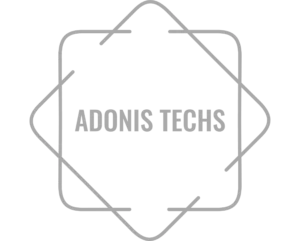Fleet management isn’t just about vehicles it’s about control, timing, and insight.
From dispatch planning to real-time vehicle monitoring, a fleet management website gives businesses the tools to manage their entire transportation network online.
Let’s explore the essential modules, integrations, and technologies that make such a system work.
Why Fleet Management Needs a Dedicated Web System
Manual tracking and spreadsheets can’t keep up with today’s logistics demands.
Enterprises need automated systems that manage driver assignments, routes, fuel usage, and maintenance logs all in one place.
Through custom website development, these operations become measurable and scalable.
A well-built fleet portal reduces downtime, improves route efficiency, and cuts operating costs.
For an overview of web project fundamentals, see Website Development by Adonistechs.
Core Modules of a Fleet Management Website
Every fleet business is different, but the foundation is similar. The following modules define a solid system:
1. Dashboard & Analytics
A central place for admins to see vehicle locations, total deliveries, and maintenance alerts.
- Key metrics: average route time, fuel cost, idle hours
- Map view with real-time GPS tracking
2. Vehicle Management
Tracks vehicle details such as registration, insurance, mileage, and maintenance records.
- Schedule preventive maintenance
- Set automated service reminders
3. Driver Management
Monitors driver assignments, behavior, and performance metrics.
- Route history logs
- Digital attendance tracking
- Driver rating and compliance management
4. Route Optimization
Uses AI or algorithm-based mapping to find the most efficient routes, reducing fuel costs.
- Real-time re-routing for traffic or weather conditions
5. Fuel & Expense Tracking
Keeps tabs on every expense tied to each vehicle, improving cost transparency.
- Expense categorization
- Fuel efficiency reports
6. Alerts & Notifications
Instant notifications for maintenance, accident alerts, or delivery delays.
7. Reports & Audits
Auto-generated data exports for management reviews or audits.
Technology Behind Fleet Portals
To handle real-time tracking and large data volumes, developers often use:
| Component | Recommended Tech |
|---|---|
| Frontend | React.js / Angular |
| Backend | Laravel / Node.js |
| Database | MySQL / PostgreSQL |
| Tracking API | Google Maps / Mapbox |
| Hosting | AWS / Azure Cloud |
These tools ensure scalability, speed, and real-time accuracy.
For examples of effective development practices, check Web Development and Portal Development.
User Experience: Simplifying Complex Operations
Fleet data can get dense. The goal of design here is clarity.
Visual dashboards, color-coded maps, and responsive layouts make information easy to digest on mobile or desktop.
If you need visual inspiration, visit Cool and Awesome Websites – 10 Best of All.
Or consult a specialized Web Design Company in Houston that focuses on functional, data-rich UI design.
Cost Breakdown of Fleet Management Website Development
Fleet management systems can vary widely in price based on scale and features:
- Basic Tracking Website: $4,000 – $6,000
- Advanced Real-Time Portal: $8,000 – $12,000
- Enterprise-Grade System with Analytics: $15,000+
Choosing a top web development agency in Houston, TX, USA guarantees professional integration of APIs, security measures, and user experience.
Here’s a look at their portfolio: Top Web Development Agency in Houston.
Marketing Integration for Fleet Businesses
Once your system is built, you’ll need visibility.
Digital marketing and SEO help your company get noticed by logistics and supply chain partners.
A trusted Web Development Company in Houston – Digital Marketing team can combine development and outreach under one strategy.
Benefits of a Fleet Management Website
- Improved operational visibility
- Reduced delivery delays
- Lower fuel and maintenance costs
- Enhanced driver accountability
- Better decision-making through analytics
Each benefit compounds over time, making the business more predictable and scalable.
Final Thoughts
Fleet management is ultimately about precision. A well-structured web portal ensures every vehicle, driver, and route is visible in real time.
By investing in custom portal development, businesses build systems that adapt as they grow future-proof and data-driven.
In logistics, the companies that win aren’t just faster they’re smarter.


